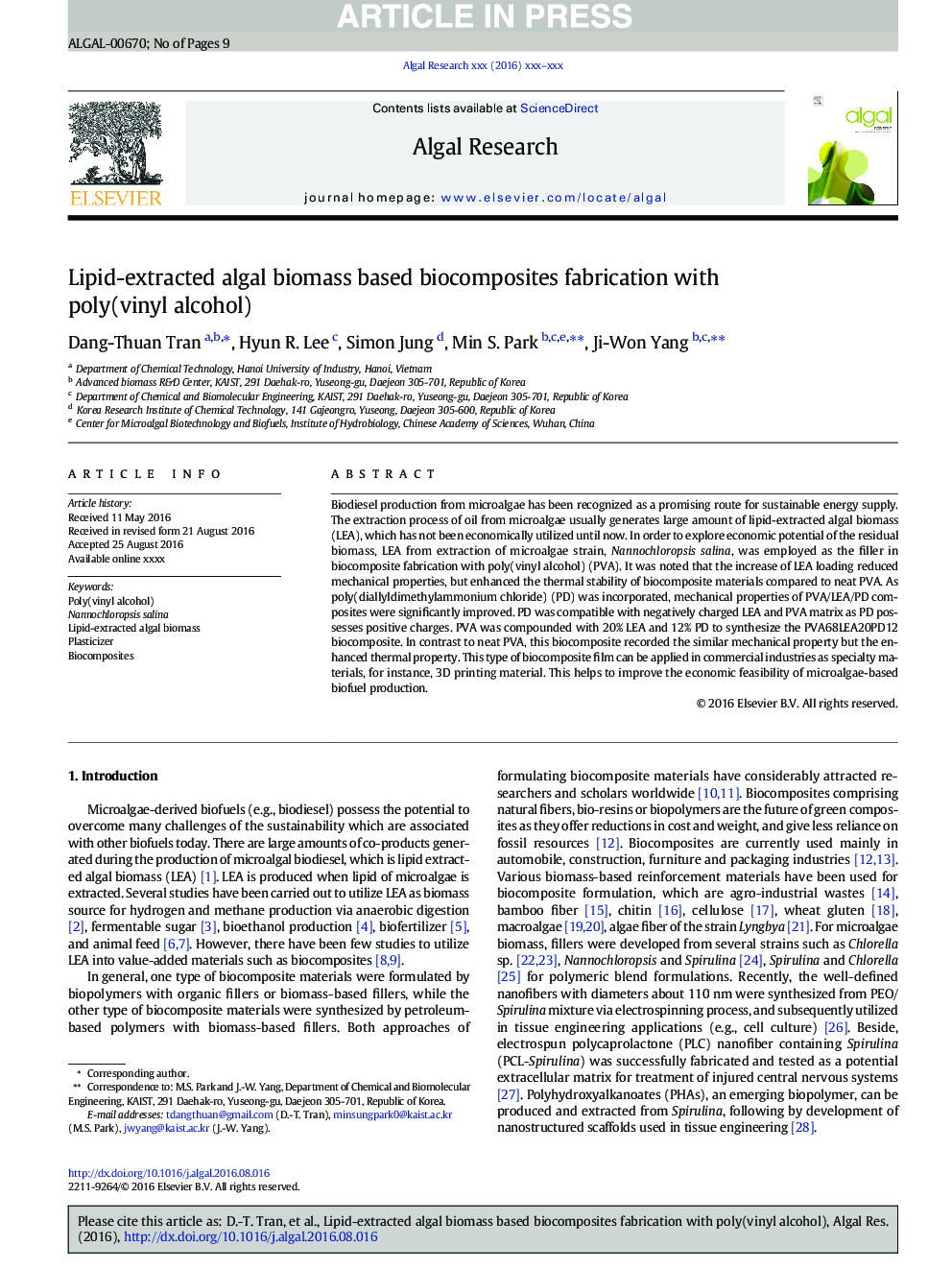| Article ID | Journal | Published Year | Pages | File Type |
|---|---|---|---|---|
| 8086192 | Algal Research | 2018 | 9 Pages |
Abstract
Biodiesel production from microalgae has been recognized as a promising route for sustainable energy supply. The extraction process of oil from microalgae usually generates large amount of lipid-extracted algal biomass (LEA), which has not been economically utilized until now. In order to explore economic potential of the residual biomass, LEA from extraction of microalgae strain, Nannochloropsis salina, was employed as the filler in biocomposite fabrication with poly(vinyl alcohol) (PVA). It was noted that the increase of LEA loading reduced mechanical properties, but enhanced the thermal stability of biocomposite materials compared to neat PVA. As poly(diallyldimethylammonium chloride) (PD) was incorporated, mechanical properties of PVA/LEA/PD composites were significantly improved. PD was compatible with negatively charged LEA and PVA matrix as PD possesses positive charges. PVA was compounded with 20% LEA and 12% PD to synthesize the PVA68LEA20PD12 biocomposite. In contrast to neat PVA, this biocomposite recorded the similar mechanical property but the enhanced thermal property. This type of biocomposite film can be applied in commercial industries as specialty materials, for instance, 3D printing material. This helps to improve the economic feasibility of microalgae-based biofuel production.
Related Topics
Physical Sciences and Engineering
Energy
Renewable Energy, Sustainability and the Environment
Authors
Dang-Thuan Tran, Hyun R. Lee, Simon Jung, Min S. Park, Ji-Won Yang,
